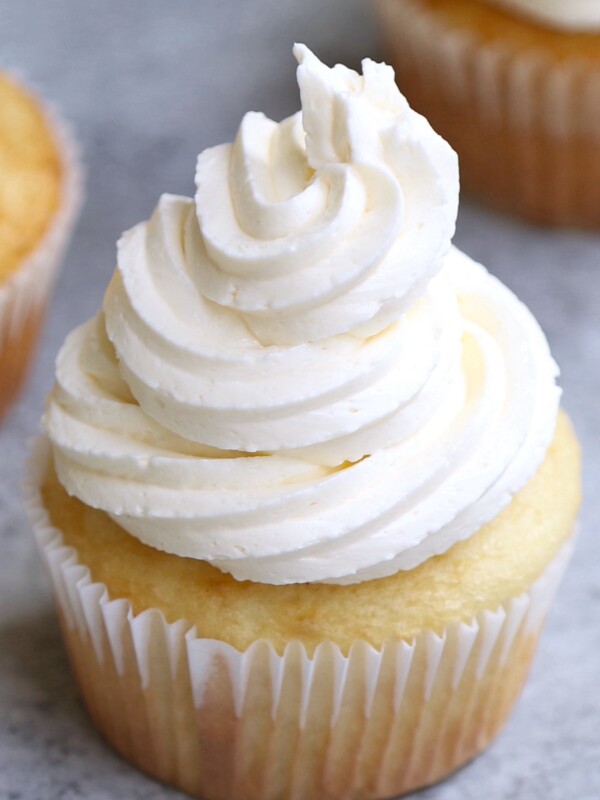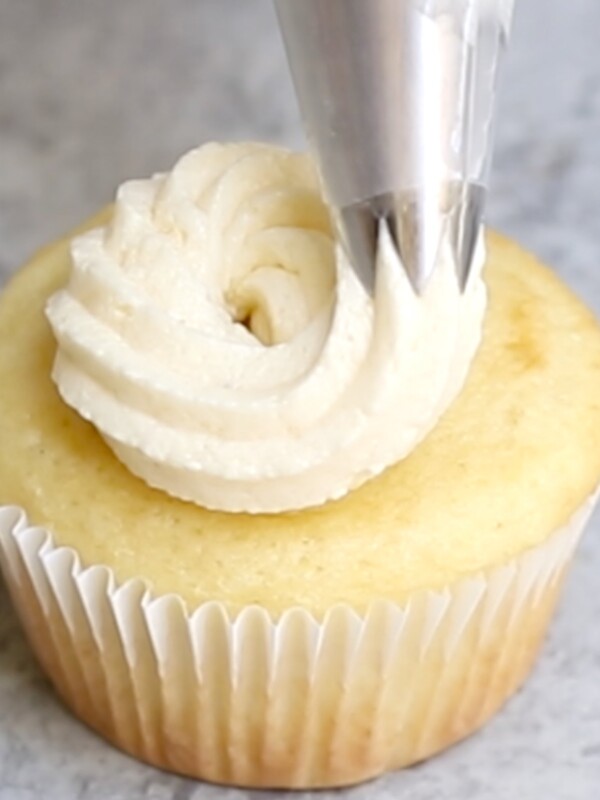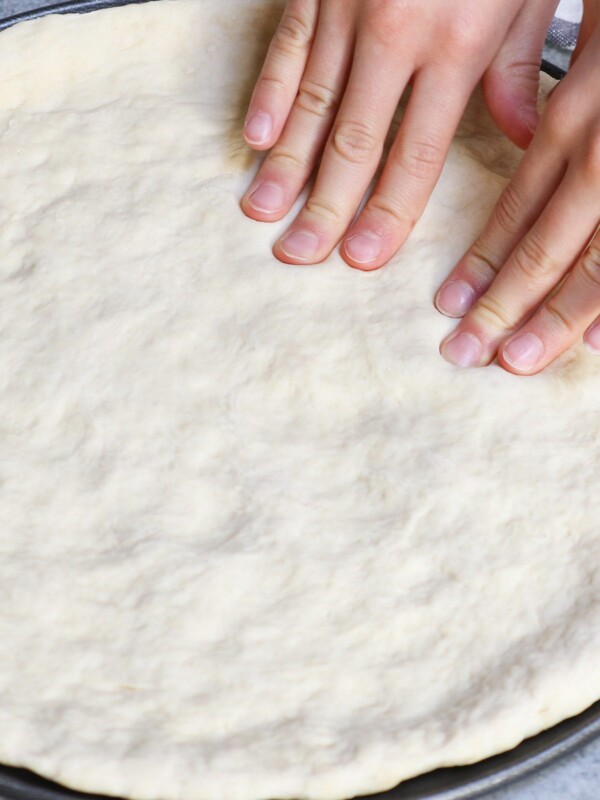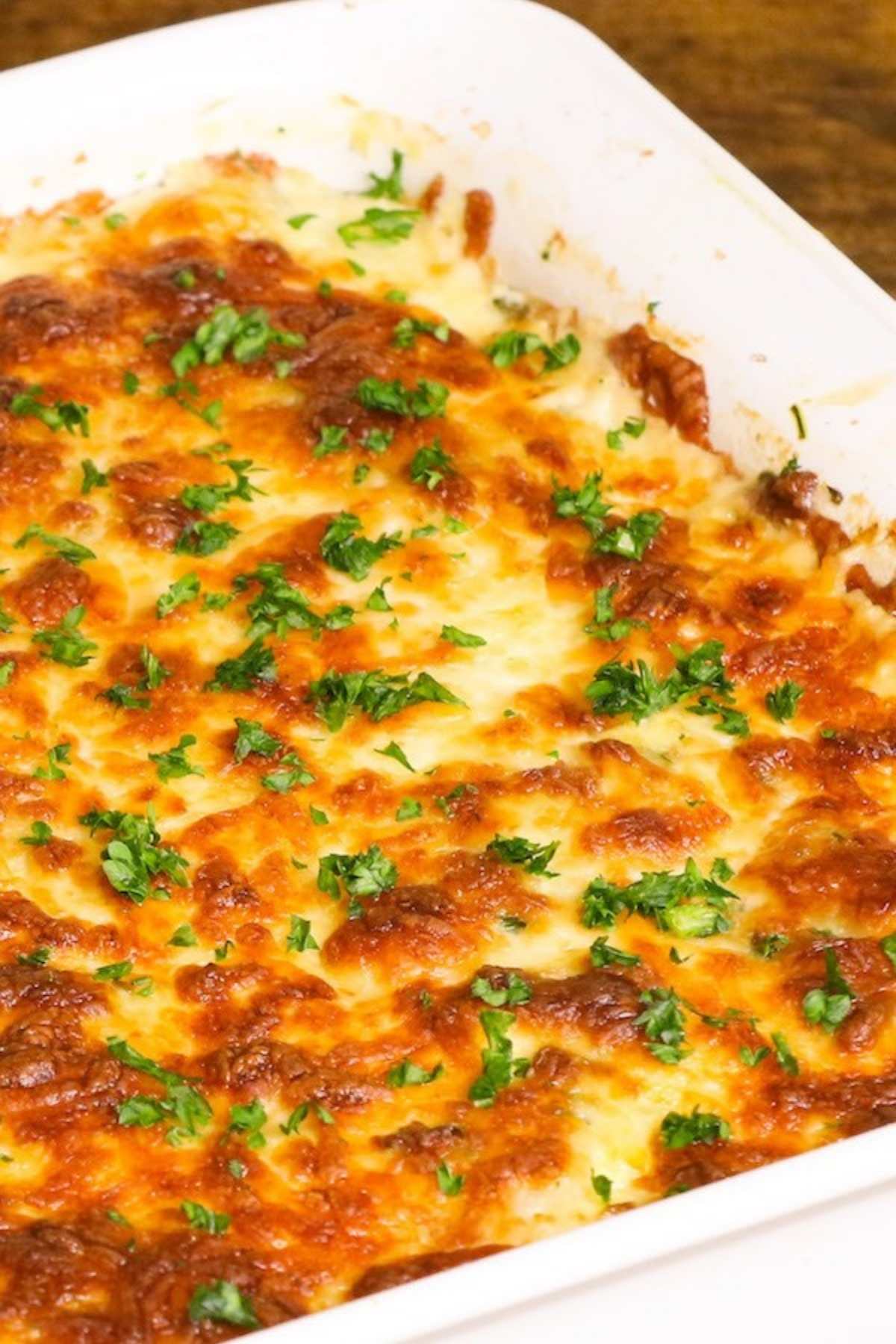Prime Rib Temperature Guide
on Apr 28, 2022
This post may contain affiliate links. Please read my disclosure policy.
With a cut like prime rib, you want to ensure that it’s perfectly cooked. The meat will become dry if it’s cooked too long, and for those who prefer their beef rare, it has to cook well enough to be safe to eat. In this post, we’re sharing some tips on how to cook prime rib as well as a guide to the ideal internal temperature.
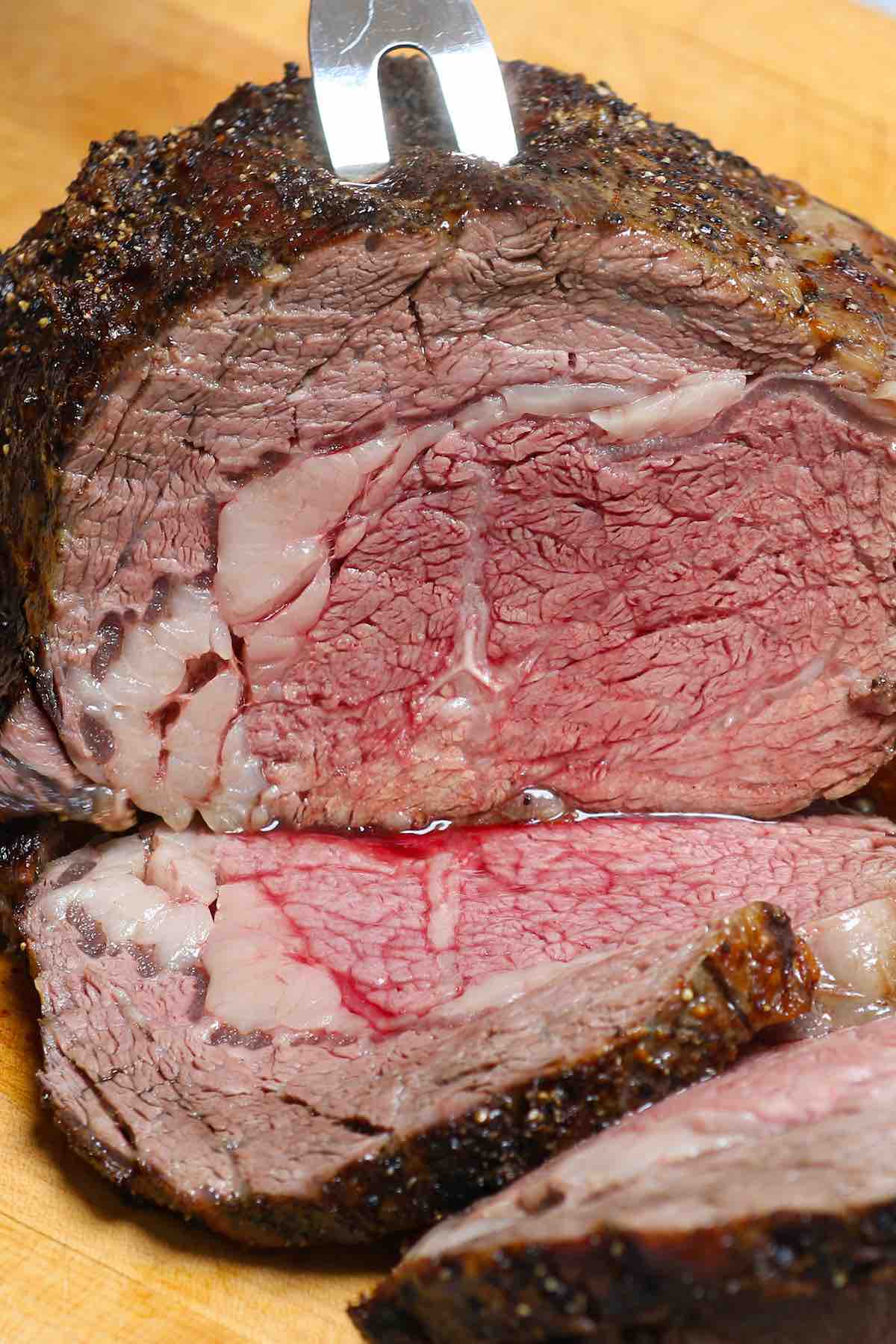
When it’s holiday time, prime rib is often on the menu. It’s a delicious cut of beef that doesn’t need a lot of ingredients. The beef is full of natural flavor that pairs well with a variety of sides.
What is Prime Rib?
A standing prime rib roast is an expensive cut of meat from a steer consisting of beef ribs and the ribeye section. It is referred to as a standing rib roast because the roast stands on the bones, creating an insulating layer of protection. Prime rib roast can be purchased as boneless or bone-in.
Proper Internal Temperature for Prime Rib
The best option is to take your prime rib out of the oven when it reaches a temperature of 120-125°F. Cover it loosely with foil and leave it to rest for 15 to 20 minutes. This should give you a medium-rare roast, which will please all your guests!
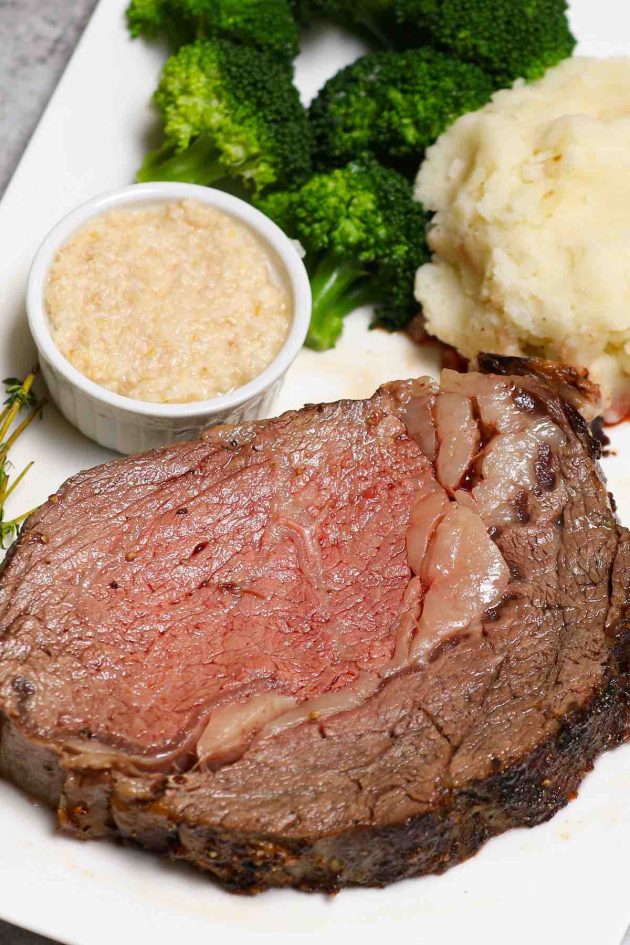
Prime Rib Temperatures by Doneness
According to the USDA, the safe level for beef is a final temperature of 145°F followed by 3 minutes of resting.
When carving, give the edge pieces to guests who prefer their meat more done, and the middle to those who prefer more red.
| Doneness | The Look | Internal Temp |
| Rare | Cool red center | 115°F / 125°F |
| Medium rare | Warm red center | 125°F / 135°F |
| Medium | Warm pink center | 135°F / 145°F |
| Medium well | Slightly pink center | 140°F / 150°F |
| Well done | Little or no pink | 145°F / 155°F |
How to Know When Prime Rib is Done: Use an Instant Read Thermometer
To take the temperature of a prime rib, insert the instant-read thermometer into the thickest part of the meat – it shouldn’t be touching the bone, or resting in fat.
How Long to Cook Prime Rib
The general rule for prime rib is 15 minutes per pound for medium-rare, but a boneless rib roast typically cooks faster at 12-14 minutes per pound assuming room-temperature meat (and slightly longer for a chilled roast).
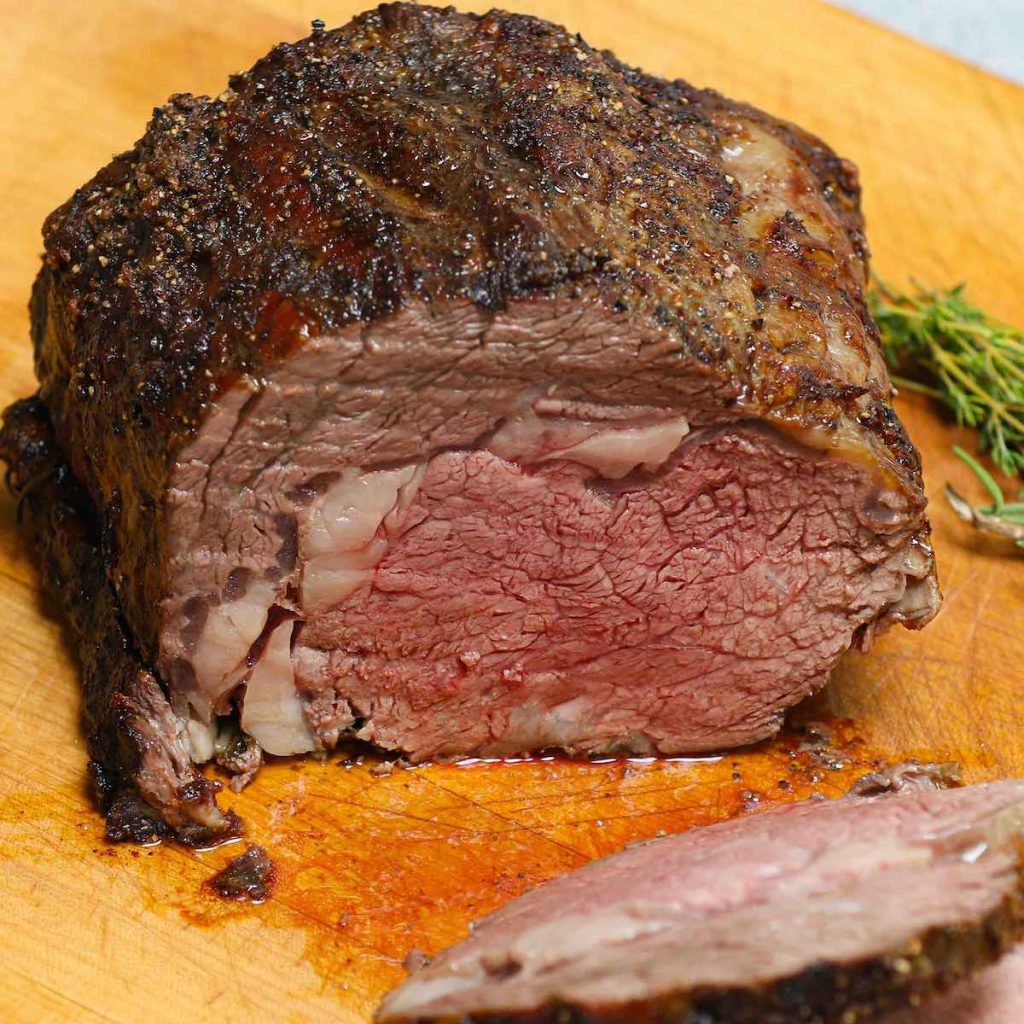
Tips to Avoid Overcooking Prime Rib
- For more even cooking, allow the meat to sit at room temperature for at least an hour prior to cooking. If the prime rib is taken directly from the refrigerator to the oven, the ends will be cooked much more than the middle.
- Around 45 minutes before you think the meat will be cooked, start checking it with a meat thermometer. Make sure you don’t wait too long, or you may find that your roast is overcooked.
- Remove your prime rib roast from the oven when it is at 10 degrees below your desired final temperature. When you cook for a crowd, the best rule of thumb is to remove your prime rib roast from the oven when it hits 120°F and allow it to rest for about 20 minutes while loosely tented with a foil.
How Much Serving of Prime Rib Per Person?
A prime rib roast can contain anywhere from 2-7 bones. They often range in size from 4-pounds all the way up to 20-pounds. To determine the size, plan on at least 1-pound per serving.
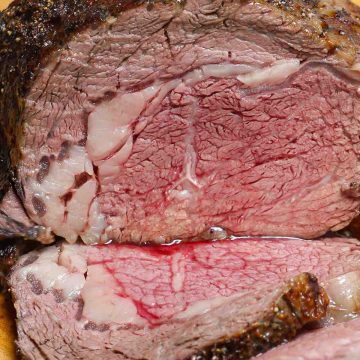
Perfect Roasted Prime Rib Recipe
Ingredients
- 1 boneless prime rib roast, Prime grade and first cut recommended (see note)
- 1 tablespoons canola oil, see note
- 1 tablespoon coarse salt, kosher salt or sea salt
- 1 tablepsoon black pepper, freshly ground
- fresh sprigs rosemary or thyme, for garnish
Instructions
- Remove the roast from the refrigerator 1-2 hours ahead of time.
- Preheat the oven to 450°F, placing the oven rack in the middle position and turning on the convection/forced air (if available).
- While you’re waiting, prepare the meat. Pat it dry with paper towels to remove excess moisture. Then score the fat on the outside about 1/8-inch deep using a sharp knife in a diamond pattern with the cuts spaced an inch or so apart.
- Rub the meat on all sides with the oil, followed by the salt and pepper. Place it fat-side up in a roasting pan fitted with a wire rack. Scatter the optional fresh herbs around the roast, reserving some for serving. If you’re using a thermometer, insert the probe into the middle of the meat.
- Place the meat in the oven and roast for 10 minutes. Then reduce the heat to 325°F. Every 30-60 minutes, baste the meat by spooning of bulb-basting the pan juices onto the meat. If the meat gets dark brown before the final 30 minutes, cover loosely with aluminum foil.
- After 60-90 minutes (or longer for large roasts), start checking the internal temperature of the meat. Insert the probe of an instant-read thermometer into the center of the roast: 115°F is rare, 125°F is medium-rare, 135°F is medium, 140°F is medium-well and 145°F is well-done. Note that temperatures will typically rise another 10°F from these levels out of the oven.
- When your desired doneness is reached, remove the roast to a carving board and tent with foil. Let it rest undisturbed for 15-20 minutes to allow the juices to redistribute throughout the meat.
- Slice against the grain to serve. Note that the outside edges will be more cooked and the center sections more red, so you can distribute servings to guests accordingly.
Notes
- When shopping, look for well-marbled beef that is prime or select grade, and ideally the smaller first cut from the loin end. Buy ½ – ¾ pound per person depending on appetites.
- Use a high-temperature oil that will not smoke in the oven. Options include canola, sunflower, safflower and refined olive oil. Avoid extra virgin olive oil.
Nutrition information provided is an estimate only and will vary based on ingredient brands and cooking methods used.
